In the competitive landscape of B2B marketing, email remains a powerful tool for building relationships, nurturing leads, and driving conversions. However, the effectiveness of your email campaigns hinges on how well you can tailor your messages to resonate with your audience. This is where email list segmentation comes into play. By dividing your subscribers into distinct groups based on shared characteristics, preferences, and behaviors, you can deliver highly relevant and personalized content that engages your audience and drives better results. In this comprehensive guide, we will explore advanced strategies for segmenting B2B email lists, including some hidden gems that can significantly enhance your email marketing efforts. Additionally, we will highlight how Prism Reach, an innovative AI-powered SaaS solution, can elevate your segmentation strategies to new heights.
Key Facts
- Segmented email campaigns can generate a 760% increase in revenue.
- Personalized email messages improve click-through rates by an average of 14%.
- 72% of consumers say they only engage with personalized messaging.
Upgrade Your Email Marketing with AI Personalization!
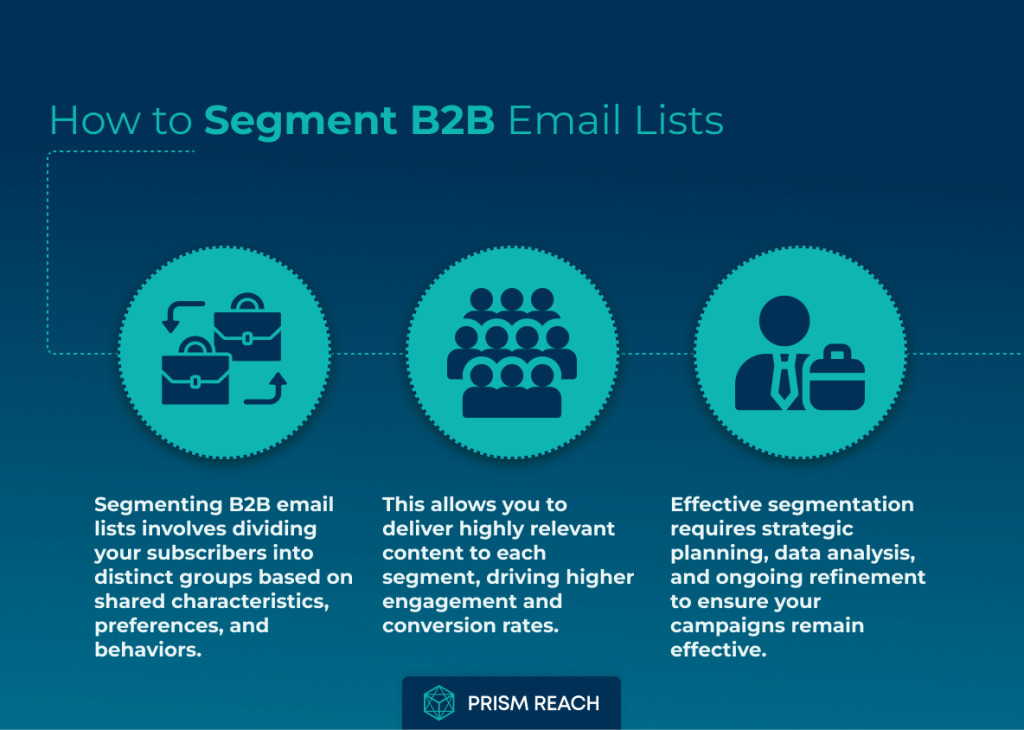
The Art of Segmenting B2B Email Lists
What is Email List Segmentation, and Why is it Crucial?
Email list segmentation is the process of dividing your subscriber base into smaller, more defined groups based on specific criteria such as demographics, behaviors, interests, and more. In the B2B context, where decision-making processes are more complex and involve multiple stakeholders, segmentation allows you to tailor your messaging to address the unique needs and pain points of each group. This level of personalization not only enhances engagement but also builds trust and credibility, ultimately leading to higher conversion rates and increased revenue.
How to Identify the Right Segmentation Criteria for Your B2B Audience
Identifying the appropriate segmentation criteria is the foundation of an effective email marketing strategy. Here are some steps to help you determine the best criteria for your B2B audience:
- Analyze Your Customer Data: Utilize your CRM and other data sources to identify common characteristics among your customers, such as industry, company size, and job roles.
- Conduct Surveys and Feedback: Engage with your audience through surveys to gather insights into their preferences, challenges, and needs.
- Monitor Website and Email Behavior: Track how subscribers interact with your website and emails, including pages visited, content downloaded, and links clicked.
- Leverage AI Tools like Prism Reach: Utilize advanced tools to analyze vast amounts of data and uncover hidden patterns that can inform your segmentation strategy.
By taking a data-driven approach, you can ensure that your segmentation criteria are relevant and effective, allowing you to deliver content that truly resonates with each segment.
Demographic Segmentation: Tailoring Content for Specific Roles
Demographic segmentation involves grouping your audience based on characteristics such as job title, company size, industry, and location. This type of segmentation is particularly effective in B2B marketing, where the roles and responsibilities of your subscribers can significantly influence their needs and interests.
For example, a software company targeting marketing professionals might create separate segments for marketing managers, marketing executives, and entry-level marketers. Each of these segments has different priorities and challenges, allowing you to craft content that addresses their specific needs:
- Marketing Managers: Focus on optimizing campaigns, managing teams, and demonstrating ROI.
- Marketing Executives: Emphasize strategic planning, budgeting, and aligning marketing efforts with business goals.
- Entry-Level Marketers: Provide educational content on best practices, tools, and skill development.
By tailoring your content in this manner, you enhance the relevance of your emails, fostering stronger engagement and building trust with your audience.
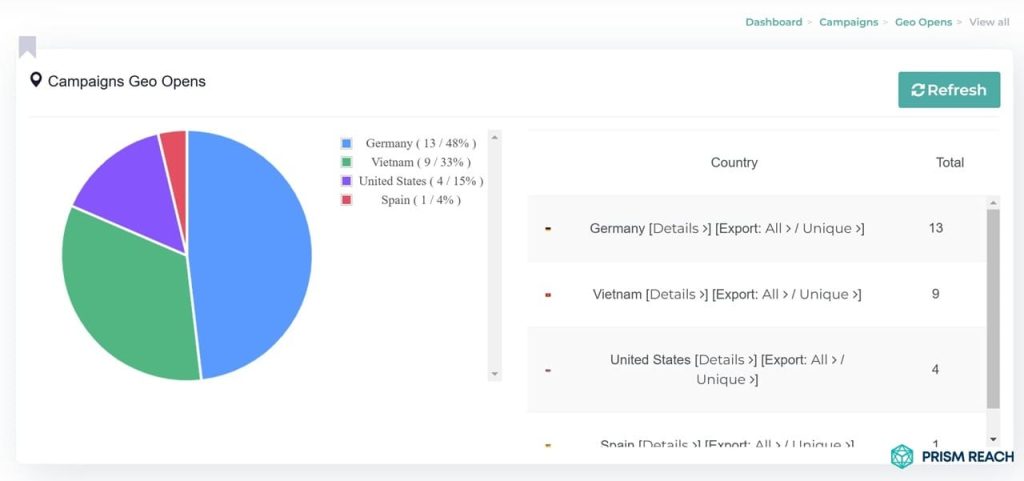
Leveraging Behavioral Segmentation: Engaging with Subscribers Based on Their Actions
Behavioral segmentation focuses on how subscribers interact with your brand, including their email engagement, website behavior, and purchase history. This approach allows you to tailor your messaging based on the actions and behaviors of your audience.
Here are some key aspects of behavioral segmentation:
- Email Engagement Metrics: Segment subscribers based on open rates, click-through rates, and interaction with specific email content.
- Website Behavior: Track which pages subscribers visit, the content they consume, and the actions they take on your website.
- Purchase History: Analyze past purchases to identify patterns and preferences, enabling you to recommend relevant products or services.
Tools like Prism Reach can enhance behavioral segmentation by providing deep insights into subscriber actions and preferences, allowing for more precise targeting and personalized content delivery.
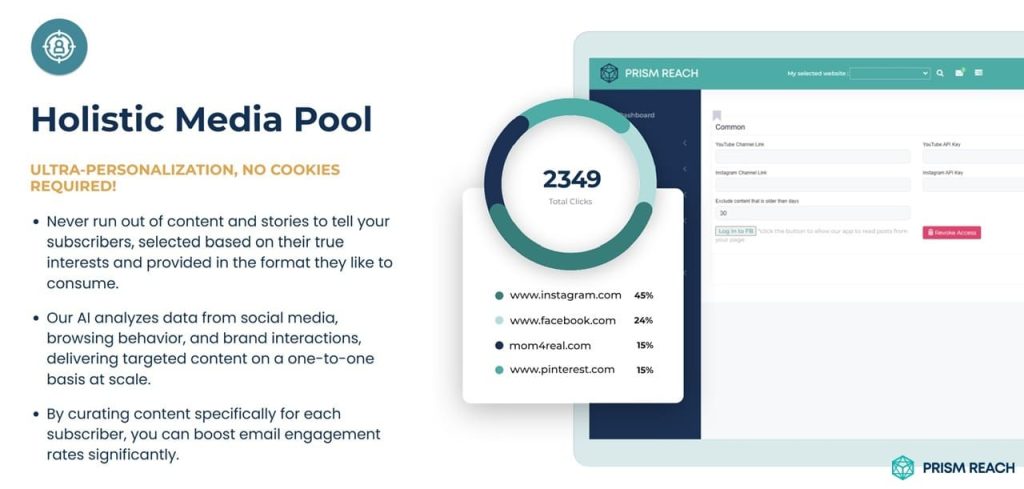
Psychographic Segmentation: Understanding Your Audience’s Mindset
While demographic and behavioral segmentation are essential, understanding the psychological factors that influence your audience’s decision-making process is equally important. Psychographic segmentation involves grouping subscribers based on their personality traits, values, lifestyle preferences, and attitudes.
For instance, IT professionals in the healthcare industry might be segmented based on their attitudes towards innovation and risk:
- Risk-Averse Professionals: Respond better to messaging that emphasizes reliability and security.
- Innovation-Seeking Professionals: Prefer content that highlights cutting-edge features and transformative potential.
By tapping into these psychological drivers, you can craft messaging that resonates on a deeper emotional level, fostering stronger connections and loyalty among your subscribers.
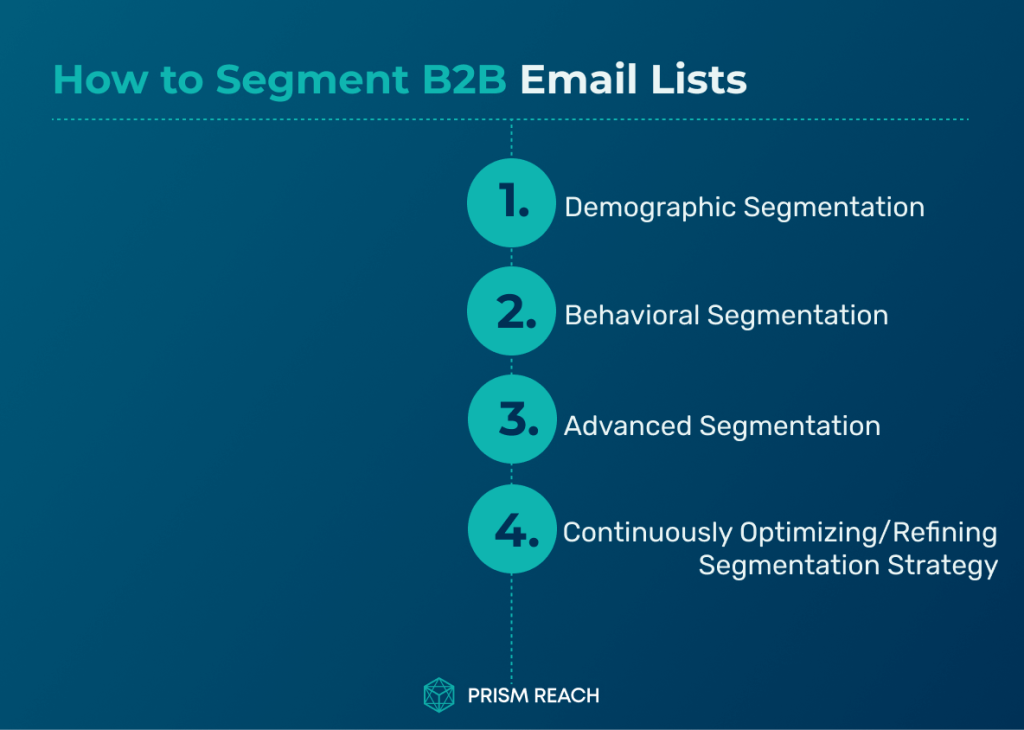
Hidden Gem Strategies for B2B Email Segmentation
Beyond the common segmentation techniques, there are several lesser-known strategies that can significantly enhance the effectiveness of your B2B email campaigns. These “hidden gems” offer unique approaches to segmenting your audience, leading to higher engagement and conversion rates.
1. Segment by Content Engagement Level
Instead of solely relying on demographic data, consider segmenting your audience based on their engagement with your content. Track which emails they open, the links they click, and the resources they download. This approach allows you to tailor future emails based on their demonstrated interests and engagement levels.
For example, subscribers who frequently engage with whitepapers and in-depth articles can be targeted with more comprehensive content, while those who prefer shorter updates can receive concise summaries.
2. Use Intent Data for Segmentation
Intent data involves analyzing online behavior to identify leads showing interest in specific topics or products. By leveraging intent data, you can create highly targeted segments that are more likely to respond to relevant content and offers.
For instance, if a subscriber frequently visits pages related to cybersecurity solutions, you can segment them into a group interested in cybersecurity and send tailored content that addresses their specific needs.
3. Implement Dynamic Segmentation
Dynamic segmentation allows your segments to automatically update in real-time based on new interactions or updated subscriber profiles. This ensures that your email campaigns are always targeting the most relevant audience without the need for manual adjustments.
With Prism Reach’s dynamic segmentation capabilities, you can set up rules that adjust segments as subscribers engage with your content, ensuring your messaging remains timely and relevant.
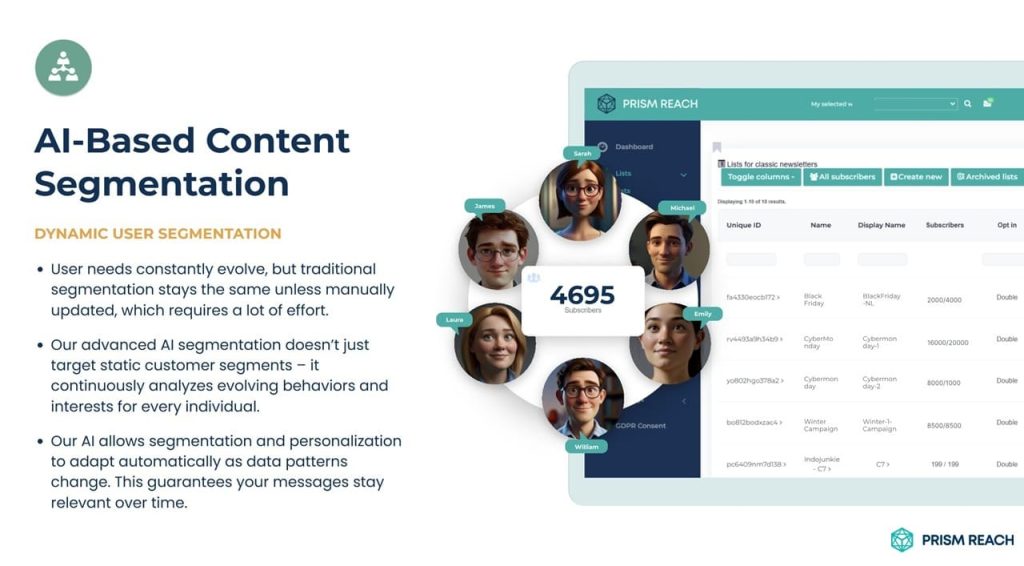
4. Segment Based on Pain Points
Identify and segment your audience according to their specific pain points or challenges. By addressing these issues directly in your messaging, you can increase engagement rates as recipients find the content directly relevant to their needs.
For example, if a segment of your audience struggles with data integration, you can send them content that highlights solutions and best practices for seamless data integration.
5. Leverage Behavioral Triggers for Re-engagement
Create segments for contacts who have shown signs of disengagement, such as not opening emails for a certain period. Use targeted re-engagement campaigns with personalized content or special offers to win them back.
For instance, sending a re-engagement email with a special discount or exclusive content can reignite interest and encourage these subscribers to re-engage with your brand.
Integrating Advanced Segmentation Tools and Techniques with Prism Reach
To effectively implement these advanced segmentation strategies, leveraging the right tools is crucial. Prism Reach stands out as an innovative AI-powered SaaS solution designed to enhance the effectiveness of your email marketing campaigns through deep personalization and advanced segmentation capabilities.
Here are three key benefits of using Prism Reach:
- AI-Powered Personalization: Prism Reach utilizes sophisticated AI algorithms to create detailed user avatars and tailor content based on subscriber behavior and preferences. This ensures that each email is highly personalized and relevant to the recipient.
- Dynamic Segmentation: The platform’s dynamic segmentation feature automatically updates segments in real-time as subscriber data changes, ensuring your campaigns are always targeting the most relevant audience without manual intervention.
- Increased Engagement and Revenue: By delivering personalized and targeted messaging, Prism Reach helps boost open rates, click-through rates, and conversions, ultimately leading to higher revenue and better ROI for your email marketing efforts.
Moreover, Prism Reach offers seamless setup and integration, allowing you to get started quickly and easily. Its intuitive interface and one-click upload feature make migrating existing subscriber lists a breeze, while AI-enhanced sign-up forms help increase sign-up rates and improve data quality.
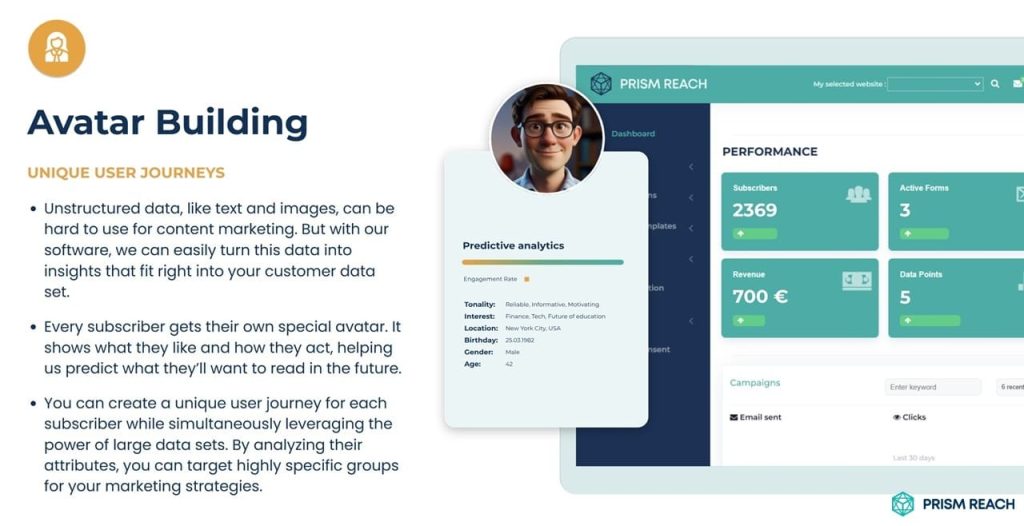
By integrating Prism Reach into your email marketing strategy, you can take your segmentation efforts to the next level, ensuring your campaigns are both highly effective and efficient.
Continuously Optimizing and Refining Your Segmentation Strategy
Email list segmentation is not a one-time task but an ongoing process that requires continuous optimization and refinement. As your business grows and your audience evolves, it’s essential to regularly evaluate and adjust your segmentation strategy to maintain its effectiveness.
Here are some best practices for optimizing your segmentation strategy:
- Analyze Campaign Performance: Regularly review key metrics such as open rates, click-through rates, and conversion rates across different segments to identify what’s working and what needs improvement.
- Test and Experiment: Conduct A/B testing on different segmentation criteria and messaging to determine the most effective approaches for each segment.
- Stay Updated with Industry Trends: Keep abreast of emerging trends and technologies in email marketing to incorporate new strategies and tools that can enhance your segmentation efforts.
- Gather Subscriber Feedback: Solicit feedback from your subscribers to gain insights into their preferences and pain points, allowing you to refine your segments accordingly.
Prism Reach facilitates this continuous optimization process by providing real-time analytics and AI-driven insights. The platform’s AI feedback loop analyzes how different segments respond to various content and messaging, allowing you to make data-driven adjustments that enhance the relevance and effectiveness of your campaigns over time.
Additionally, Prism Reach’s automation capabilities streamline your email marketing workflows, reducing the time and effort required to manage and optimize your segments. This enables you to focus more on crafting compelling content and strategies that drive meaningful results.
FAQ
Conclusion
Mastering the art of email list segmentation is essential for delivering personalized and engaging experiences that resonate with your B2B audience. By implementing advanced segmentation strategies, including the hidden gems discussed in this guide, you can create highly targeted campaigns that foster stronger connections, drive higher engagement, and ultimately, increase conversions and revenue.
Prism Reach offers a powerful solution to elevate your segmentation efforts, leveraging AI-powered personalization and dynamic segmentation to ensure your email campaigns are both relevant and effective. By continuously optimizing and refining your segmentation strategy with the help of advanced tools like Prism Reach, you can stay ahead of the competition and deliver exceptional email marketing experiences that drive real results for your business.
Upgrade your email marketing today with Prism Reach and experience the transformative power of personalized, data-driven segmentation.